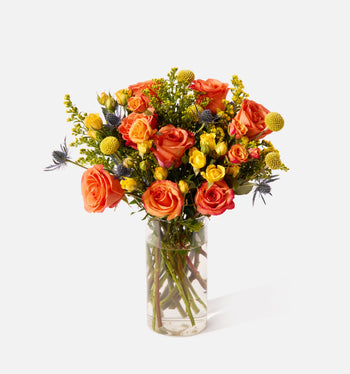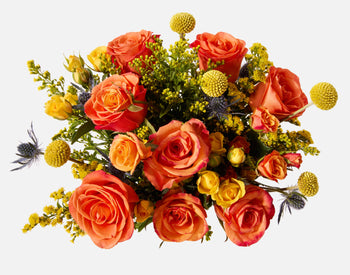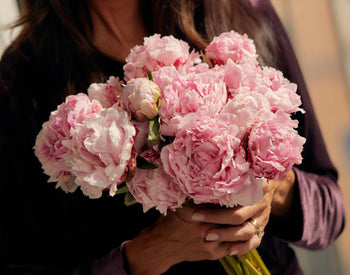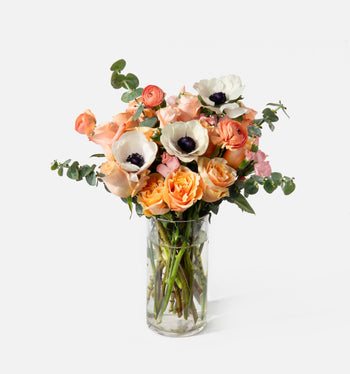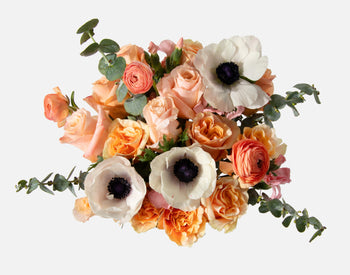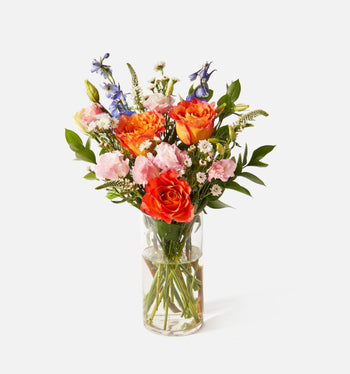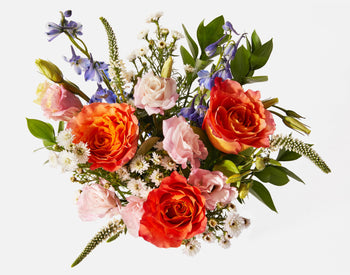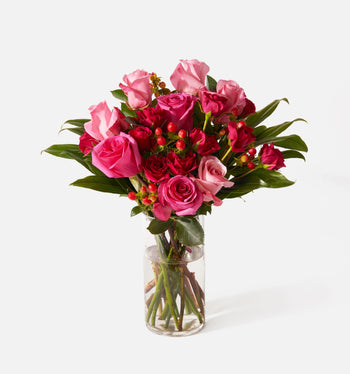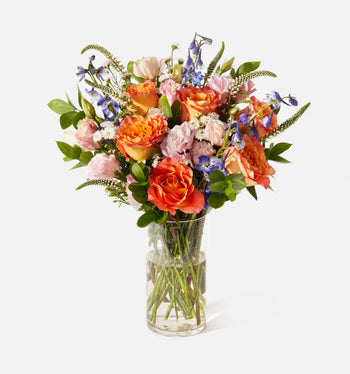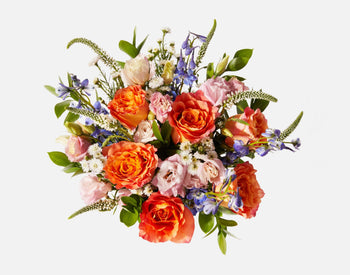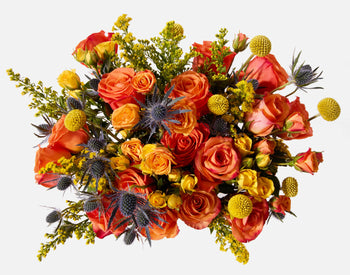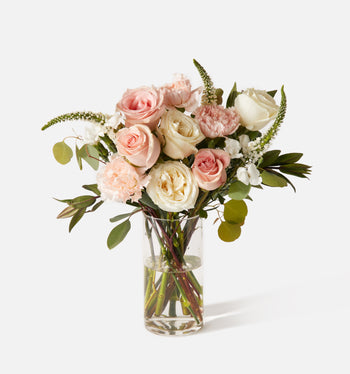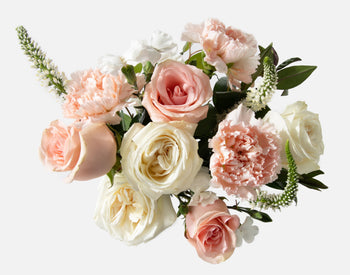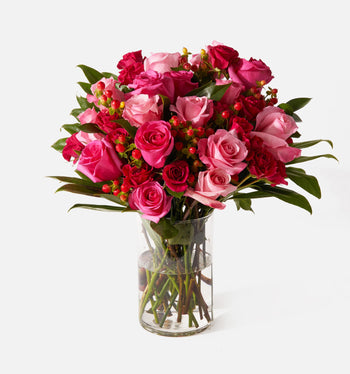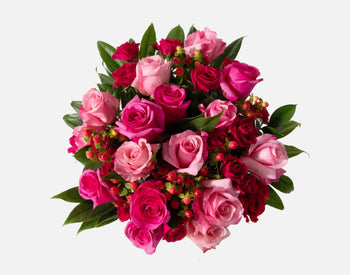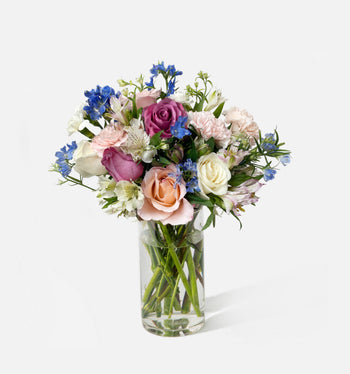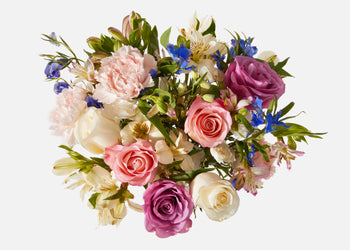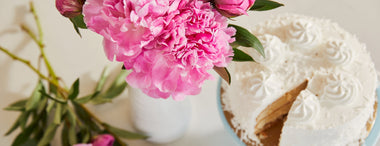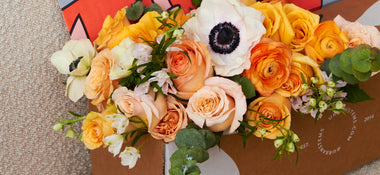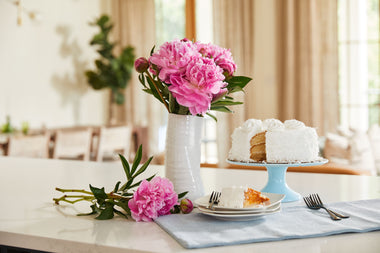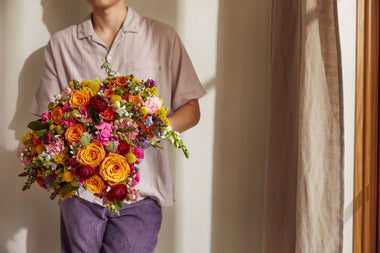Spring flowers are the vibrant indication of a new season, marking the end of winter and the beginning of growth and renewal. The best spring flowers are tulips, daffodils, cherry blossoms, lilacs, hyacinths, pansies, irises, crocuses, primroses, wildflowers, lily of the valley, and magnolias. Their bright colors and delicate blooms are symbolic of nature’s freshest offerings, bringing a burst of life to gardens, homes, and floral arrangements.
12 Popular Spring Flowers
- Tulips
- Daffodils
- Cherry Blossoms
- Lilacs
- Hyacinths
- Pansies
- Irises
- Crocuses
- Primroses
- Wildflowers
- Lily of the Valley
- Magnolias
1. Tulips

Tulips symbolize love and are popular for their elegant cup-shaped blooms. They come in a wide range of colors, including red, pink, yellow, and purple, making them ideal for creating vibrant spring vibes. Tulips are timeless, whether planted in gardens or arranged in a vase.
Tulip Growing Tips
- Plant bulbs 4-6 inches apart and 6-8 inches deep in the fall.
- Use a fertilizer during planting.
- Make sure they are in full sun to part shade and can drain easily.
- USDA Grow Zone: 3–8
- Sun: Full sun to part shade
- Soil: Rich and well-draining
2. Daffodils

Daffodils symbolize rebirth and new beginnings, making them the quintessential spring flower. These blooms are usually yellow, but you’ll also find varieties in white and orange. They’re hardy and easy to grow, brightening gardens annually.
Daffodil Growing Tips
- Space bulbs 3-6 inches apart and plant them 4-6 inches deep in the fall.
- Fertilize lightly when foliage begins to emerge.
- Grow in full sun to part shade with well-draining soil.
- USDA Grow Zone: 3–8
- Sun: Full sun to part shade
- Soil: Rich and well-draining
3. Cherry Blossoms

Cherry blossoms are iconic symbols of spring’s beauty. Their delicate pink and white petals create a colorful atmosphere in parks and gardens. Cherry blossom trees are admired worldwide and make a beautiful addition to any landscape.
Cherry Blossom Growing Tips
- Plant trees 10-20 feet apart to allow room for growth.
- Use fresh fertilizer in early spring.
- Provide full sun and well-draining soil.
- USDA Grow Zone: 5–8
- Sun: Full sun
- Soil: Rich and well-draining
4. Lilacs

Lilacs represent love and renewal, with clusters of fragrant blossoms in various shades like purple, pink, and white. These flowers are considered shrubs but are perfect for creating a romantic garden atmosphere.
Lilac Growing Tips
- Space shrubs 5-15 feet apart depending on the variety.
- Fertilize in early spring.
- Grow in full sun and well-draining soil.
- USDA Grow Zone: 3–7
- Sun: Full sun
- Soil: Well-draining soil
5. Hyacinths

Hyacinths are known for their intense fragrance and vibrant colors, including purple, pink, and white. They are compact blooms which are ideal for garden borders and small planters, adding a delightful scent to any space.
Hyacinth Growing Tips
- Plant bulbs 4-6 inches apart and 4-6 inches deep in the fall.
- Use a bulb-specific fertilizer at planting time.
- Provide full sun to part shade and well-draining soil.
- USDA Grow Zone: 3–9
- Sun: Full sun to part shade
- Soil: Rich and well-draining
6. Pansies

Pansies are versatile flowers that symbolize thoughtfulness and remembrance. With their bright, multicolored blooms, they are perfect for garden beds, borders, and planters.
Pansy Growing Tips
- Space plants 6-8 inches apart.
- Fertilize every 4-6 weeks.
- Provide full sun to part shade and well-draining soil.
- USDA Grow Zone: 6–10
- Sun: Full sun to part shade
- Soil: Well-draining soil
7. Irises

Irises symbolize wisdom, with their striking foliage and elegant petals in colors like purple, yellow, and white. They’re ideal for adding height and a little drama to your garden.
Iris Growing Tips
- Space 12-24 inches apart.
- Use a low-nitrogen fertilizer in early spring.
- Grow in full sun.
- USDA Grow Zone: 3–9
- Sun: Full sun
- Soil: Rich and well-draining soil
8. Crocuses

Crocuses are among the first flowers to bloom in spring, symbolizing renewal. These small but vibrant flowers come in purple, yellow, and white, often peek through the snow to welcome the season.
Crocus Growing Tips
- Plant bulbs 3-4 inches apart and 3-4 inches deep in the fall.
- Use a general-purpose fertilizer during planting.
- Provide full sun to part shade and well-draining soil.
- USDA Grow Zone: 3–8
- Sun: Full sun to part shade
- Soil: Well-draining soil
9. Primroses

Primroses symbolize optimism, with their energizing, multi-hued blooms. These hardy flowers thrive in gardens and small planters, bringing a touch of spring to any space.
Primrose Growing Tips
- Space plants 6-12 inches apart.
- Use a balanced fertilizer during active growth.
- Grow in full sun to part shade.
- USDA Grow Zone: 3–8
- Sun: Full sun to part shade
- Soil: Well-draining soil
10. Wildflowers

Wildflowers symbolize natural beauty and thrive in meadows and less-manicured landscapes. They come in various colors and forms, providing essential habitat for pollinators.
Wildflower Growing Tips
- Scatter seeds and cover lightly with soil.
- Use a slow-release fertilizer in spring.
- Provide full sun to part shade and well-draining soil.
- USDA Grow Zone: 3-9
- Sun: Full sun to part shade
- Soil: Well-draining soil
11. Lily of the Valley

The Lily of the Valley symbolizes sweetness, with dainty white bell-shaped flowers that exude a candied fragrance. They’re perfect for shady garden spots!
Lily of the Valley Growing Tips
- Plant 1-2 inches apart in early spring.
- Fertilize with a balanced fertilizer.
- Grow in part to full shade and well-draining soil.
- USDA Grow Zone: 3–9
- Sun: Part shade to full shade
- Soil: Well-draining soil
12. Magnolias

Magnolias symbolize beauty, with their large, sweet blooms in white, pink, and purple. These trees (sometimes referred to as shrubs) add a dramatic focal point to any garden.
Magnolia Growing Tips
- Space 10-30 feet apart depending on the variety.
- Use a slow-release fertilizer in spring.
- Provide full sun to part shade and well-draining soil.
- USDA Grow Zone: 4–9
- Sun: Full sun to part shade
- Soil: Well-draining soil
Spring Flower Bouquets Delivered to Your Door
 Spring flowers are a wonderful way to bring a burst of cheer into a gift. From vibrant bouquets to arrangements in gorgeous vases, spring blooms make thoughtful and personal presents for birthdays, anniversaries, or just because. A fresh spring bouquet can brighten someone’s day and add a touch of natural beauty to their home.
Spring flowers are a wonderful way to bring a burst of cheer into a gift. From vibrant bouquets to arrangements in gorgeous vases, spring blooms make thoughtful and personal presents for birthdays, anniversaries, or just because. A fresh spring bouquet can brighten someone’s day and add a touch of natural beauty to their home.
Looking for the perfect spring flowers to brighten your space? Explore The Spring Collection, featuring a beautiful selection of fresh, seasonal blooms that bring the happiness and renewal of spring right to your doorstep.
FAQs
What flower symbolizes graduation?
Orchids are a popular choice for graduation because they symbolizie strength, beauty, and achievement. Roses and sunflowers are also great options because they represent success and happiness.
What colors for graduation should I choose?
When choosing colors for graduation flowers, consider the school colors, the graduate’s favorite colors, or stick to the classics like white, gold, and green. If you’re still unsure, a vibrant mix of seasonal flowers is always a safe choice.
How can I create a personalized graduation bouquet?
To create a personalized graduation bouquet, choose flowers meaningful to them, add a personal touch like a card, include a sentimental item like a framed photograph, and customize it to their unique style. It’s all about them!
What are the best flowers for spring?
Some of the best spring flowers include tulips, peonies, and ranunculus. These flowers are celebrated for their vibrant colors and versatile beauty, making them perfect for gardens, arrangements, and gifts.
Which spring flowers are perennial?
Perennial spring flowers like lavender, marigolds, and delphiniums bloom annually, offering lasting beauty. These flowers thrive through multiple seasons, making them ideal for low-maintenance gardens.
Are there hypoallergenic flowers for spring?
Absolutely! Hypoallergenic spring flowers, such as orchids and ranunculus, are perfect for those with allergies. These flowers produce minimal pollen, allowing allergy sufferers to enjoy the beauty of spring without the discomfort.


